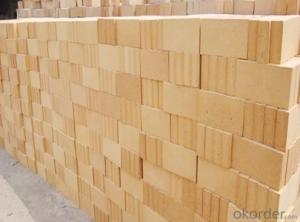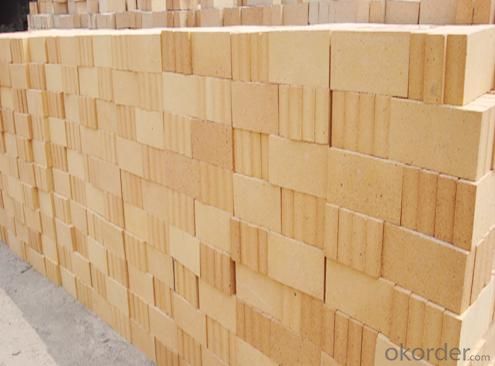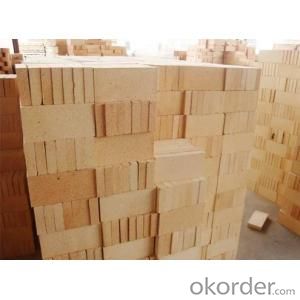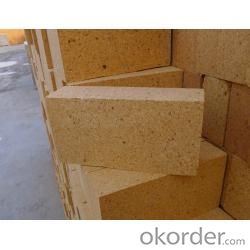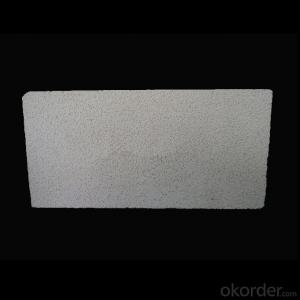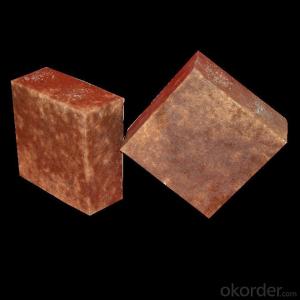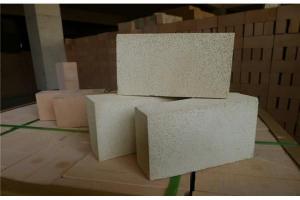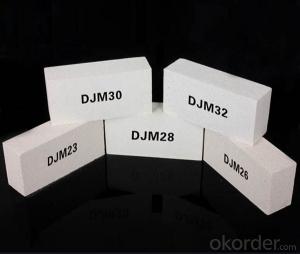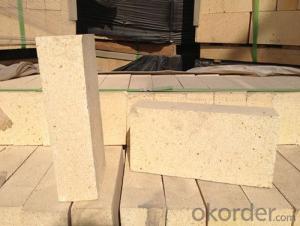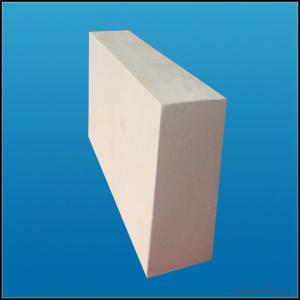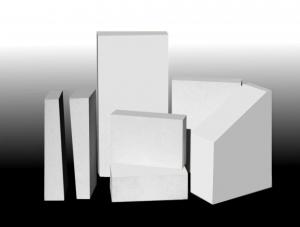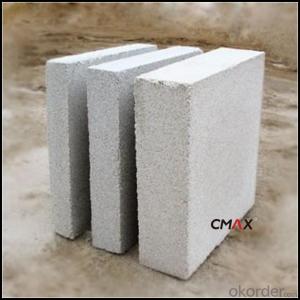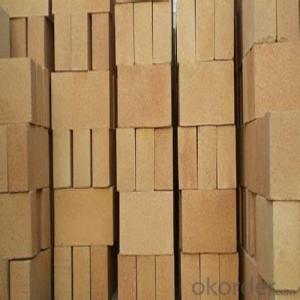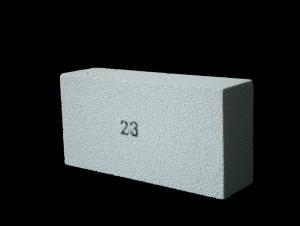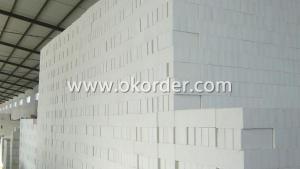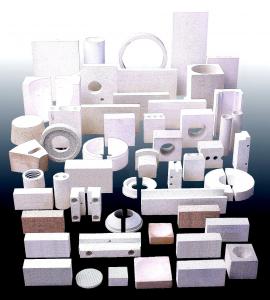SK-34 Insulating Fire Brick
- Loading Port:
- China Main Port
- Payment Terms:
- TT OR LC
- Min Order Qty:
- -
- Supply Capability:
- -
OKorder Service Pledge
OKorder Financial Service
You Might Also Like
Specifications
Fire brick1.ISO 9001 approved,
2.With high quality and competitive price,
3.Standard and special shape.
Fire-clay refractory brick.
1. N-1
AL2O3 (%)>42
Refractoriness >1750
Refractoriness under load KD>1400
Permanent linear change onreheating
1500*2h
1450*2h
1400*2h:+0.1; -0.4
Apparent Porosity(%)<22
Cold crushing strength (Mpa)>29.4
2. N-2a
AL2O3 (%)>40
Refractoriness >1730
Refractoriness under load KD>1350
Permanent linear change onreheating
1500*2h
1450*2h
1400*2h:+0.1; -0.5
Apparent Porosity(%)<24
Cold crushing strength (Mpa)>24.5
High-alumina refractory brick
1. LZ-75
AL2O3 (%)>75
Refractoriness>1790
Refractoriness under load KD>1520
Permanent linear change onreheating
1500*2h:+0.1; -0.4
1450*2h
1400*2h
Apparent Porosity(%)<23
Cold crushing strength (Mpa)>53.9
2. LZ-65
AL2O3 (%)>65
Refractoriness >1790
Refractoriness under load KD>1500
Permanent linear change onreheating
1500*2h:+0.1; -0.4
1450*2h
1400*2h
Apparent Porosity(%)<23
Cold crushing strength (Mpa)>49
3.LZ-55
AL2O3 (%)>55
Refractoriness >1770
Refractoriness under load KD>1470
Permanent linear change onreheating
1500*2h:+0.1; -0.4
1450*2h
1400*2h
Apparent Porosity(%)<22
Cold crushing strength (Mpa)>44.1
4.LZ-48
AL2O3 (%)>48
Refractoriness >1750
Refractoriness under load KD>1420
Permanent linear change onreheating
1500*2h
1450*2h:+0.1; -0.4
1400*2h
Apparent Porosity(%)<22
Cold crushing strength (Mpa)>39.2
Fire clay brick SK-32 | |
Item | Standard |
AI2O3(%) | 30 |
Fe2O3 (%) | 3.5 |
Refractoriness (SK) | 32 |
Refractoriness under load, 0.2MPa, Ta, (°C) | 1300 |
Porosity (%) | 22-26 |
Bulk density (g/cm³) | 2.05 |
Cold crushing strength (MPa) | 25 |
Thermal expansion at 1000°C (%) | 0.6 |
Fire clay brick SK-34 | |
Item | Standard |
AI2O3(%) | 38 |
Fe2O3 (%) | 2.5 |
Refractoriness (SK) | 34 |
Refractoriness under load, 0.2MPa, Ta, (°C) | 1350 |
Porosity (%) | 19-23 |
Bulk density (g/cm³) | 2.10-2.15 |
Cold crushing strength (MPa) | 25 |
Thermal expansion at 1000°C (%) | 0.6 |
Fire clay brick SK-36 | |
Item | Standard |
AI2O3(%) | 50 |
Fe2O3 (%) | 2 |
Refractoriness (SK) | 36 |
Refractoriness under load, 0.2MPa, Ta, (°C) | 1450 |
Porosity (%) | 20-24 |
Bulk density (g/cm³) | 2.30-2.40 |
Cold crushing strength (MPa) | 45 |
Thermal expansion at 1000°C (%) | 0.3 |
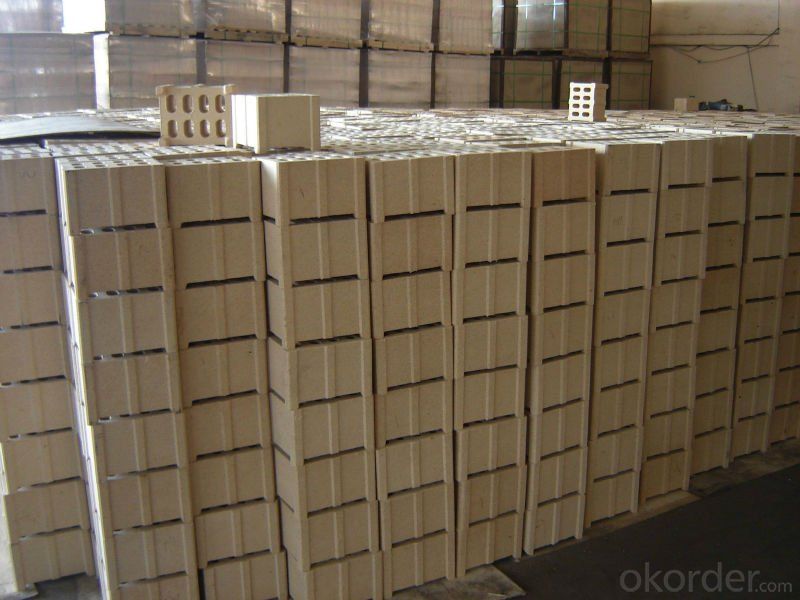
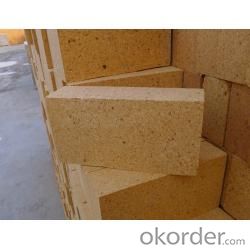
- Q: What materials are used to make insulating fire bricks?
- Insulating fire bricks are made from a variety of materials that possess high thermal insulation properties. The most common material used in the production of these bricks is a type of clay known as kaolin clay. This clay is mixed with other additives such as alumina, silica, and zirconium to enhance its insulating properties and increase its resistance to high temperatures. In addition to clay, other materials like sawdust, vermiculite, perlite, and calcium silicate are also sometimes added to the mixture to further improve the insulation capabilities of the bricks. Overall, the combination of these materials allows insulating fire bricks to have low thermal conductivity, high heat resistance, and excellent insulation qualities, making them suitable for a wide range of industrial and domestic applications.
- Q: Are insulating fire bricks resistant to UV radiation?
- Insulating fire bricks are not typically designed to be resistant to UV radiation. UV radiation from the sun can cause degradation and discoloration of many materials, including fire bricks. Therefore, it is recommended to protect insulating fire bricks from direct exposure to UV radiation, such as by using a protective coating or covering when they are used in outdoor applications. Additionally, prolonged exposure to UV radiation can also affect the thermal and insulating properties of fire bricks, potentially reducing their effectiveness over time. Therefore, it is important to consider UV protection measures when using insulating fire bricks in applications where they may be exposed to direct sunlight.
- Q: How do insulating fire bricks perform in terms of thermal stability?
- Insulating fire bricks boast exceptional thermal stability, renowned for their ability to endure extreme temperatures while providing insulation in diverse industrial settings. Composed of lightweight refractory materials with low thermal conductivity, these bricks proficiently capture and retain heat. A prominent attribute that distinguishes insulating fire bricks as an optimal choice for thermal insulation is their capacity to maintain structural integrity even under the harshest temperature conditions. They exhibit remarkable resistance to thermal shock, enabling them to endure abrupt temperature fluctuations without succumbing to cracks or breakages. Consequently, they prove invaluable in applications such as furnaces, kilns, and other environments with elevated temperatures. Moreover, insulating fire bricks possess a minimal coefficient of thermal expansion, ensuring that they undergo negligible expansion or contraction when exposed to heat. This characteristic safeguards the bricks' shape and prevents the formation of cracks or gaps due to thermal stress. In terms of thermal stability, insulating fire bricks excel in insulation properties. They possess a high insulating value, effectively diminishing heat loss and conserving energy. This quality proves advantageous in situations that necessitate consistent temperature maintenance, as it minimizes heat transfer and enhances overall energy efficiency. In summary, insulating fire bricks exhibit remarkable thermal stability, thanks to their capacity to endure high temperatures, resist thermal shock, and offer efficient insulation. These qualities establish them as a dependable choice for a wide range of industrial and commercial applications.
- Q: Do insulating fire bricks have a low thermal expansion rate?
- Insulating fire bricks are known for their low thermal expansion rate. They are specifically designed to endure high temperatures and thermal shocks, with one of their key features being their ability to retain their shape and dimensions even in extreme heat conditions. These bricks are produced from materials that possess a low coefficient of thermal expansion, which means they undergo minimal expansion and contraction when exposed to temperature changes. This characteristic guarantees the stability of the bricks, preventing them from cracking or breaking due to thermal stress. Moreover, the low thermal expansion rate of insulating fire bricks contributes to improved insulation performance. By minimizing the formation of gaps between the bricks during expansion and contraction, heat loss is reduced and energy efficiency is enhanced.
- Q: Can insulating fire bricks be used for flooring insulation?
- Insulating fire bricks are primarily designed for high-temperature applications such as kilns, furnaces, and fireplaces. While they can provide excellent thermal insulation, they may not be the best choice for flooring insulation. Insulating fire bricks are typically softer and less durable compared to other flooring materials, which can make them susceptible to damage from foot traffic. Additionally, they may not provide sufficient support and stability for the floor, especially in high-traffic areas. For flooring insulation, it is generally recommended to use materials specifically designed for this purpose, such as foam boards, cork, or rubber underlayments. These materials are more resilient, durable, and better suited to withstand the demands of flooring applications. They also offer better noise reduction and moisture resistance, which are important considerations for flooring insulation.
- Q: Can insulating fire bricks be used in the construction of boilers for steam generation?
- Yes, insulating fire bricks can be used in the construction of boilers for steam generation. Insulating fire bricks have excellent heat insulation properties, making them suitable for use in high-temperature applications such as boilers. They help to minimize heat loss, improve energy efficiency, and ensure safe and efficient steam generation.
- Q: Can insulating fire bricks be used for both residential and commercial purposes?
- Yes, insulating fire bricks can be used for both residential and commercial purposes. Insulating fire bricks are designed to provide excellent insulation and thermal protection, making them suitable for a wide range of applications. In residential settings, these bricks can be used for insulating fireplaces, wood-burning stoves, and pizza ovens, among others. In commercial settings, they are commonly used for kilns, furnaces, boilers, and industrial ovens. The versatility of insulating fire bricks makes them a popular choice for both residential and commercial projects where effective thermal insulation is required.
- Q: Can insulating fire bricks be used in ceramic kilns?
- Yes, insulating fire bricks can be used in ceramic kilns. These bricks are designed to have high insulating properties, making them ideal for maintaining heat within the kiln. They are lightweight and can withstand high temperatures, making them a suitable choice for ceramic kilns.
- Q: Can insulating fire bricks be used in the construction of glass bottle production furnaces?
- Insulating fire bricks have the capability to be utilized in the construction of glass bottle production furnaces. These bricks are specifically designed to withstand high temperatures and offer exceptional thermal insulation. They are commonly employed in applications that necessitate heat retention and energy efficiency, like furnaces. By incorporating insulating fire bricks into the construction of glass bottle production furnaces, the generated heat during the glass-making process can be effectively contained within the furnace, resulting in diminished heat loss and enhanced energy efficiency. Consequently, this can lead to cost savings and improved production performance. Furthermore, insulating fire bricks can aid in safeguarding the structural integrity of the furnace by minimizing thermal stress and preventing heat transfer to the surrounding environment. In summary, the utilization of insulating fire bricks in glass bottle production furnaces can contribute to a more efficient and long-lasting furnace operation.
- Q: Do insulating fire bricks have a high resistance to creep?
- Yes, insulating fire bricks generally have a high resistance to creep. The low thermal conductivity and high refractoriness of these bricks allow them to withstand high temperatures without significant deformation or creep.
Send your message to us
SK-34 Insulating Fire Brick
- Loading Port:
- China Main Port
- Payment Terms:
- TT OR LC
- Min Order Qty:
- -
- Supply Capability:
- -
OKorder Service Pledge
OKorder Financial Service
Similar products
Hot products
Hot Searches
Related keywords
